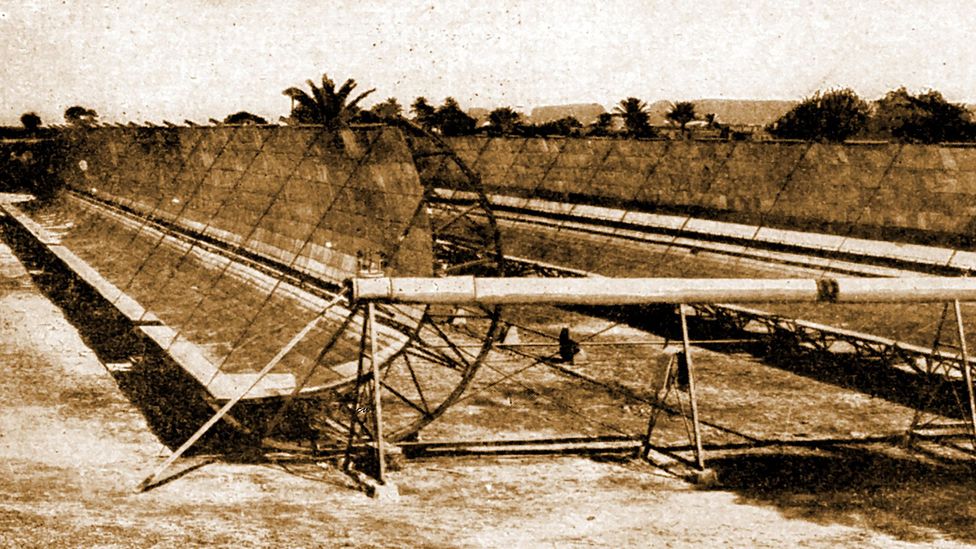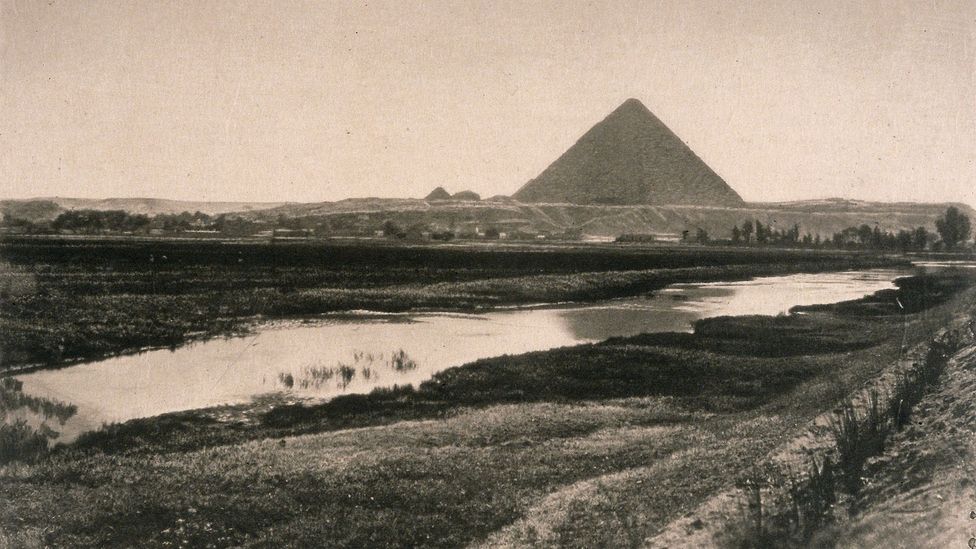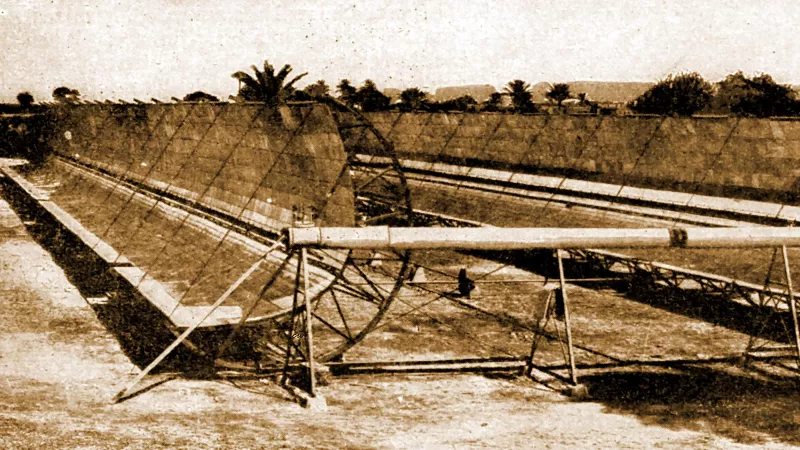The early 1900s was an age of coal and iron. The industry was noisy and filthy, spewing smoke from burning coal far and wide. In Philadelphia, one of the hives of industry on the Eastern Seaboard of the US, things had already become intolerable. In 1904, some 50 years before the country's Air Pollution Act of 1955, the city's administrators had created their own regulations for cleaner air. It limited the amount of smoke in flues, chimneys, and open spaces, and punished those who emitted fumes of a "certain degree of darkness" with fines. Into this world came an American inventor with a simple plan – to harness the heat of the Sun so it could be used to power machinery. It has taken more than a century for ideas like his to achieve critical mass, but we could be at a turning point; earlier in April, the energy analyst Ember published a report predicting that energy production from fossil fuels will peak this year. (Read more about the significance of such tipping points in clean energy.)
Read Also: How coffee and tea can affect risk of early death for adults with diabetes - New Study
The technology that will help push this tipping point might have come of age in the 1980s, but the story of Frank Shuman's quest to harness the power of the Sun shows that the seeds were sown a lot earlier. In the 1890s, Shuman invented a method of strengthening glass with internal wires. The glass was more fire-resistant and also held together when it cracked, making it less likely to create dangerously sharp shards. Institutions such as schools and prisons loved it. Shuman, who had started his career in Virginia, then went to work for his uncle's metalwork factory in Philadelphia – the factory was casting a statue of Pennsylvania's founder William Penn, and needed to find a way to electroplate it with aluminum to protect it from the pollution-clogged air high above City Hall. At the same time, he started a company selling his patented "Safe-tee Glass".
As writer Christopher R Dougherty notes in a profile on Shuman for the Philadelphia website Hidden City: "The electroplating and wire glass processes were so innovative that Scientific American magazine published articles on each within two weeks of each other in 1892; they were also successful enough that Shuman left employment to focus full-time on his inventions."

An inveterate inventor, Shuman had long been intrigued by the concept of using natural forces to create electricity. "Shuman was well aware of the ever-present nuisance of coal smoke," Dougherty tells the BBC. "In promotional literature for his direct-acting solar engine, he claimed a byproduct of his technology would [mean] 'the air of the cities will be healthy and pure'. "Our riverfronts were full of coal yards and oil refineries and cheap fossil fuels, so for Shuman to imagine the end of this resource was far ahead of its time." Free to tinker thanks to his safety-glass fortune, in 1906 Shuman began working from a compound he had built at his home in the northeastern suburb of Tacony, Philadelphia, to create an engine powered by the Sun's rays. Reflectors were placed around insulated boxes, which were built on swivels so the reflectors could follow the Sun's path during the day. The Sun's rays were directed toward a vessel of water held in a vacuum to lower its boiling point, which was connected to a low-pressure steam engine. By 1910, Shuman had refined the concept to the point where he could run a small toy train on vaporized ether and was extolling the benefits of this clean form of power to all who would listen.
While Shuman was working on his "Sun engine" another US inventor – Aubrey Eneas – created a giant metallic solar engine, which was lined with nearly 1,800 mirrors and measured 33ft (10m) across, for an ostrich farm in California in 1906. The device did work, running a pump to irrigate the land, but was ultimately too expensive and cumbersome to prove viable. News of Suman's projects traveled, eventually, to Egypt, which was then under military occupation by the British Empire. Egypt had vast cotton fields but irrigating them by hand was a laborious process, and using coal-powered engines was not cost-effective. "Shuman courted British capitalists to invest in his solar array as a way to cut coal costs," says Dougherty. In 1913, Shuman traveled to Egypt to demonstrate his technology. "Sipping champagne and snacking on cheese and caviar, mustachioed men in Panama hats and pith helmets and elegant ladies carrying parasols strolled the grounds, marveling at the long, gleaming rows of trough-shaped mirrors concentrating sunlight onto cast-iron boilers running the length of each trough," recounted Jeremy Shere, writing about the event in his book Renewable: The World-Changing Power of Alternative Energy. "Heated to just more than 200F (93C), water in the boilers turned to low-pressure steam to drive a specially designed, 75 horsepower engine. As if by magic, running on nothing more than sunlight, the engine pumped thousands of gallons of water from the Nile, saturating the arid landscape."





